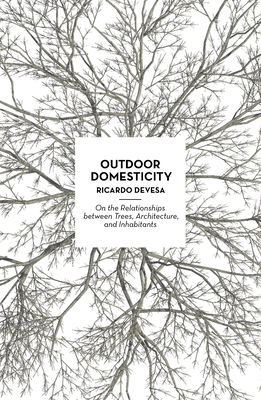Outdoor Domesticity: On the Relationships Between Trees, Architecture, and Inhabitants

Outdoor Domesticity: On the Relationships Between Trees, Architecture, and Inhabitants
Trees have been deliberately connected with houses since they were introduced as a prominent part of architectural design. The relationships of contiguity between houses and trees have existed since ancient times. However, at the end of the 19th century those links became explicit in the design process, as the house emerged as one of the fundamental architectural programs, and as the result of an increasing sensibility towards environmental aspects and the landscape. The first part of this publication is to present a collection of exemplary five houses that evinced explicit relationships with pre-existing trees. The five twentieth century projects are: La Casa (B. Rudofsky, 1969), Cottage Caesar (M. Breuer, 1951), Ville La Roche (Le Corbusier & P. Jeanneret, 1923), Villa Pepa (J. Navarro Baldeweg, 1994) and Hexenhaus (A. & P. Smithson, 1984-2002). The second part of the book contributes three theoretical concerns for the contemporary project, those ones which are established in the process, with respect to time, place and outdoor domesticity in modern western housing. One of these theoretical contributions establishes that any house located on a site finds a significant place in conjunction with the preexisting trees. The second contribution describes the effects in terms of time, in addition to spatial considerations, which trees can contribute to the architectural project. Finally, the establishment of these connections between architecture and trees enlarges the idea of the house: the tree serves to draw the surrounding environment into the house and, as a result, becomes an intrinsic part of the house itself.
PRP: 216.69 Lei
Acesta este Prețul Recomandat de Producător. Prețul de vânzare al produsului este afișat mai jos.
195.02Lei
195.02Lei
216.69 LeiLivrare in 2-4 saptamani
Descrierea produsului
Trees have been deliberately connected with houses since they were introduced as a prominent part of architectural design. The relationships of contiguity between houses and trees have existed since ancient times. However, at the end of the 19th century those links became explicit in the design process, as the house emerged as one of the fundamental architectural programs, and as the result of an increasing sensibility towards environmental aspects and the landscape. The first part of this publication is to present a collection of exemplary five houses that evinced explicit relationships with pre-existing trees. The five twentieth century projects are: La Casa (B. Rudofsky, 1969), Cottage Caesar (M. Breuer, 1951), Ville La Roche (Le Corbusier & P. Jeanneret, 1923), Villa Pepa (J. Navarro Baldeweg, 1994) and Hexenhaus (A. & P. Smithson, 1984-2002). The second part of the book contributes three theoretical concerns for the contemporary project, those ones which are established in the process, with respect to time, place and outdoor domesticity in modern western housing. One of these theoretical contributions establishes that any house located on a site finds a significant place in conjunction with the preexisting trees. The second contribution describes the effects in terms of time, in addition to spatial considerations, which trees can contribute to the architectural project. Finally, the establishment of these connections between architecture and trees enlarges the idea of the house: the tree serves to draw the surrounding environment into the house and, as a result, becomes an intrinsic part of the house itself.
Detaliile produsului










